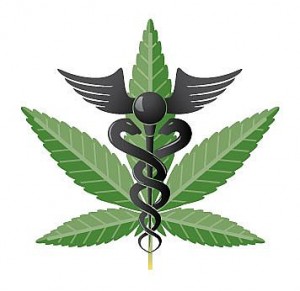Medical marijuana has spread prominently through the United States as a safe, natural medication that’s effective for numerous health conditions. Many Americans have decided that marijuana is the right medication to treat their ailments.
If you are considering obtaining a medical marijuana card, this guide will provide you with useful information. We’re going to outline the simple steps involved in getting certified to legally use medical marijuana.
Before taking any of these steps, make sure to familiarize yourself with your state’s laws on medical marijuana. We endeavor to keep all of the state laws up to date and accurate, but in the end you are the one responsible of making sure you abide by the laws in your state.
The process for getting a medical marijuana card will vary by state, but will generally follow the below outline.
1. Ensure you have a qualifying medical condition
 Each state has its own rules on which conditions are permitted qualifying conditions for medical marijuana. While some states have extensive lists, sometimes open to any condition as recommended by a licensed doctor, others have far more restrictive of qualifying conditions.
Each state has its own rules on which conditions are permitted qualifying conditions for medical marijuana. While some states have extensive lists, sometimes open to any condition as recommended by a licensed doctor, others have far more restrictive of qualifying conditions.
Take a look at the qualifying conditions in your state to assess whether you qualify for the medicinal use of cannabis.
Some of the most common conditions which qualify for medical marijuana include the following:
- Chronic Pain
- AIDS/HIV
- Nausea
- Cancer
- Glaucoma
- Amyotrophic Lateral Sclerosis (ALS)
- Multiple Sclerosis (MS)
- Crohn’s Disease
- Alzheimer’s
- Hepatitis C
2. Check your state’s legal requirements
As well as suffering for a qualifying medical condition, there are other legal requirements to become a medical marijuana patient in your state. Common requirements include the need to verify that you are a resident of the state in question, as well as verifying that you are of a legal age to use medical marijuana.
3. Obtain a copy of your official medical records
You are required to provide an official copy of your medical records to the doctor that is recommending you medical marijuana. When you submit a request, doctors are legally required to provide you copies of your records.
If you would prefer not to go directly to your physician and ask for a copy of your health records, your marijuana doctor can obtain a complete direct transfer. This is done by submitting a form and faxing it to your primary health provider. They then compile the documents needed and fax them over to your marijuana doctor. Although this can save you some time and hassle, not all medical marijuana doctors offer this service.
4. Book an appointment with a medical marijuana doctor
It might seem impossible to find a doctor who believes in the work of medical marijuana, but though it might be tricky, it is possible. Most doctors that do this, do so through clinics. These types of clinics are often listed online and promote the fact that they prescribe medical marijuana.
Once you find a trusted and legit medical marijuana doctor, it’s time to make an appointment. Though some clinics do allow walk-ins, make sure you call ahead of time to become familiar with the method the clinic utilizes.
We’ve created a useful tool to help you find medical marijuana doctors near you.
5. Attend a doctor’s appointment and be prepared for a full examination
As with any type of appointment, make sure you arrive to your certification appointment 15 minutes early. This will allow you to be sure you are there in time for your appointment and to fill out any necessary paperwork.
Once you are put into a room, you will probably wait a few minutes for the doctor to show up. When he does, he will probably look over your medical history (using the records you provide) and ask you some questions related to your lifestyle, medical condition, and why you think marijuana is right for you.
Though these may seem like very straightforward questions, it is vital that you are up front and honest with your doctor. Though he/she is only trying to help you, marijuana doctors are used to patients that lie about their health conditions in order to get a medical marijuana card to legally use cannabis. Your doctor will be able to tell if you are not being serious.
Once your doctor is sure that you have a valid qualifying condition and agrees that medicinal marijuana use will help you, you will likely be given a prescription for medical marijuana.
6. Fill out the correct application for your state.
Though you have just been given a prescription for marijuana, you are still not legal. You need to first get approved by the state. This is done by filling out and submitting the correct paperwork.
Each state’s process for obtaining a medical marijuana card is different. Your doctor will provide you with plenty of paperwork that you will need to submit with your application. They may also provide you with the correct application and a service to help fill out and mail these documents. If your clinic is nice enough to do this, then they will give you a temporary card and you are all set.
If this is not the case, then you will need to be sure that you obtain the correct application and mail it to the right place. Double check that you have included all required documents and have correctly filled out the application as you don’t want your efforts to go to waste.
Most states, along with the fee for your doctor’s appointment, require a registration fee for your medical marijuana certification. The amount of this fee changes from state to state, but it is vital that you include the correct amount, or else your application will be null and void.
7. Wait for approval.
After you have done all of the hard work, it is time to sit back and wait. Waiting periods can be anywhere from one to four weeks, and then you will receive a notification from the state which will either approve or reject you.
If you have been approved, congratulations! You will receive full documentation on your state’s laws and a card that entitles you to use. However, if you have been rejected, the notification will include the reasoning and give you options as to what to do next.
8. Acquire marijuana from a licensed dispensary
Once you receive your card, you are legally entitled to obtain and use medical marijuana. States have different guidelines on how you can use prescribed medical marijuana, but most include visiting compassion clubs, licensed dispensaries, growing your own marijuana, or finding a certified caregiver. The best option for you will depend on your personal circumstances.
–
Though it may seem daunting at first, getting your medical marijuana card is a simple and rewarding process. We hope that this guide helped you, and that you were able to obtain the medicine that you deserve. As always, make sure that you are familiar with your state’s laws and follow them accordingly.

